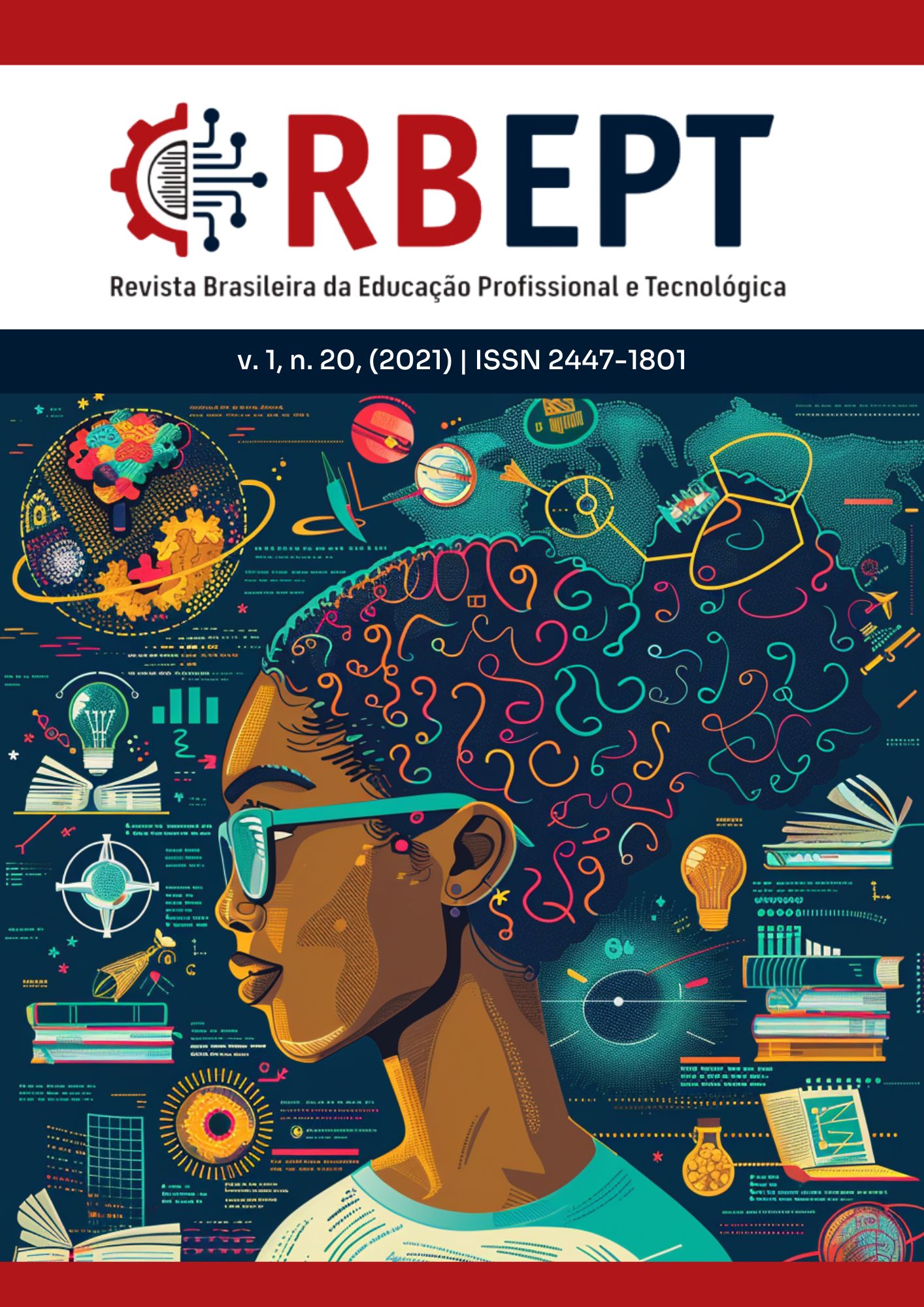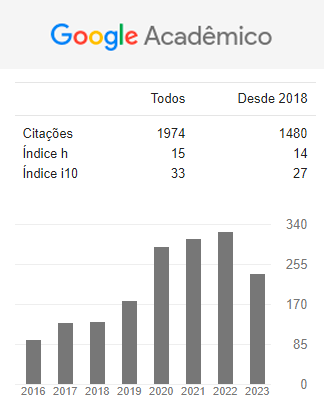Interdisciplinary approach to the teaching of technical writing in two technological institutes in Brazil and Norway
DOI:
https://doi.org/10.15628/rbept.2021.11943Palavras-chave:
Interdisciplinarity. Integration. Technical Writing. Technological institutes. Autonomy.Resumo
The teaching of technical writing to novice STEM researchers in two technological institutes, in Brazil (IFSP) and in Norway (NTNU), has been an interdisciplinary effort that integrates linguistic and technical disciplines, while building on the local context and fostering student autonomy. Within this approach, we use two tools: the career-related Design Thinking framework, in a pedagogical application that teaches writing alongside project development for problem-solving (RODRIGUES; BAPTISTA, 2019); and the Writer’s Wheel (HAAS, 2009), a writing model that guides students to the understanding and management of their own technical scientific writing process. We show how an integrated approach involves drawing appropriately from several disciplines, leading students from convention to innovation, from the development of linguistic, cognitive and technological strategic competence towards autonomy, based on their needs. We find that teaching writing in parallel with project development guides students to understand and manage their own communication process. We outline possible next steps in the improvement of the approach, with regard to theory and educational practice.
Downloads
Referências
ABOELELA, S. W., LARSON, E., BAKKEN, S., CARRASQUILLO, O., FORMICOLA, A., GLIED, S. A., HAAS, J. and GEBBIE, K. M., Defining Interdisciplinary Research: Conclusions from a Critical Review of the Literature. Health Services Research, 2007, 42: 329–346. doi: 10.1111/j.1475-6773.2006.00621.x. <http://www.hsph.harvard.edu/trec/about-us/definitions/>.
CARGILL, M.; O'CONNOR, P. Writing Scientific Research Articles: Strategy and Steps. Blackwell Publishing, 2009.
COXHEAD, A. The academic word list 10 years on: Research and teaching implications. Tesol Quarterly, 45(2), 355-362. 2011.
DAYRELL, C., CANDIDO JR, A., LIMA, G., MACHADO JR, D., COPESTAKE, A., FELTRIM, V., TAGNIN, S., ALUÍSIO, S.. Rhetorical move detection in English abstracts: multi-label sentence classifiers and their annotated corpora. In Proceedings of the 8th International Conference on Language Resources and Evaluation (LREC 2012). 2012. http://www.lrec-conf.org/proceedings/lrec2012/pdf/734_Paper.pdf
FAUCONNIER, G.; TURNER, M. The way we think: Conceptual blending and the mind’s hidden complexities. Basic Books, New York, 2002.
FILLMORE. C. Frame Semantics. In: Linguistics in the morning calm. Seoul: Hanshin, 1982, p.111-138.
FLOWERDEW, J.; PEACOCK, M. Research perspectives on English for academic purposes. Ernst Klett Sprachen. 2001.
FREIRE, P. Pedagogia da autonomia: Saberes necessários à prática educativa. São Paulo: Editora Paz e Terra, 1996.
GILLETT, A. J. Designing a website for EAP - UEfAP. IATEFL Computer SIG: CALL Review, February, 2005, p. 44-49.
HAAS, S. Writers’ groups for MA ESOL students: Collaboratively Constructing a Model of the Writing Process. English Lang Teach Educ Dev journal (ELTED), 12: 23-9. 2009.
HERMAN, D. How stories make us smarter: narrative theory & cognitive semiotics. Recherchesen Communication, 19, 133-154. 2003.
JONSMOEN, K. M.; GREEK, M. Skrivekår i profesjonsutdanning. Uniped, 2012, 35.04: 4-13.
JORDAN, R. R. English for Academic Purposes: a guide and resource book for teachers. Cambridge: CUP, 1997.
LIEDTKA, J.; OGILVIE, T. Designing for growth: a Design Thinking tool kit for managers. New York: Columbia University Press, 2011.
MCCUTCHEN, D.; TESKE, P.; BANKSTON, C. Writing and Cognition: Implications of the Cognitive Architecture for Learning to Write and Writing to Learn. In: BAZERMAN, C. (ed.) Handbook of Research on Writing: History, Society, School, Individual, Text. New York: Taylor & Francis Group, 2008. p. 574-598.
MEMI?, E. K.; ÖZ, M. The Impact of Inquiry Process on the Cognitive Process Dimensions of Nontraditional Writing. Mediterranean Journal of Social Sciences, [S.l.], v. 5, n. 20, p. 1158, sep. 2014.
MORLEY, J. An initiative to develop Academic Phrasebank: a university-wide online writing resource’ in Snaphots of Innovation, Enterprise Centre for Learning & Curriculum Innovation (University of Manchester & UMIST), 2004.
PRITCHARD, R.; HONEYCUTT, R. The process approach to writing instruction: examining its effectiveness. In: MACARTHUR, C.; GRAHAM, S.; FITZGERALD, J. (Eds.), Handbook of writing research. New York: The Guilford Press, 2006. p. 275-290.
RODRIGUES, R. F. L.; BAPTISTA, A. E. Design thinking tools for scientific storytelling: a didactic innovation. Proceedings of the 13th Annual International Technology, Education and Development Conference, INTED 2019. 11th-13th March, 2019. Valencia, Spain.
SWALES, J. M. The futures of EAP genre studies: A personal viewpoint. Journal of English for Academic Purposes, 38, 75-82. 2019.
SWALES, J. M.; FEAK, C. B. Abstracts and the writing of abstracts. Ann Arbor: University of Michigan Press, 2009.
VALERIANO, Dalton L. Gerência em Projetos: pesquisa, desenvolvimento e engenharia. São Paulo: Makron Books, 1998.
WU, J. Improving the writing of research papers: IMRAD and beyond. Landscape Ecol 26, 1345–1349. 2011.
Downloads
Publicado
Como Citar
Edição
Seção
Licença

Este trabalho está licenciado sob uma licença Creative Commons Attribution 4.0 International License.
O autor na submissão do artigo transfere o direito autoral ao periódico. À Revista Brasileira da Educação Profisisonal e Tecnológica ficam reservados os direitos autorais pertinentes a todos os artigos nela publicados.


























